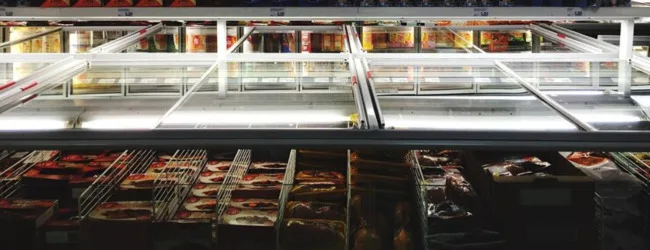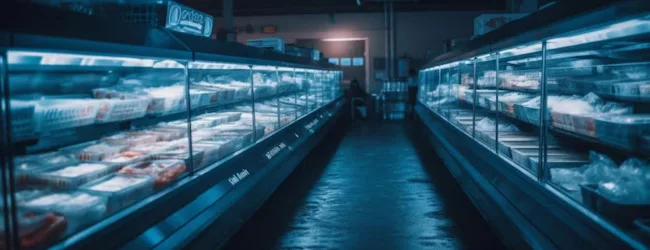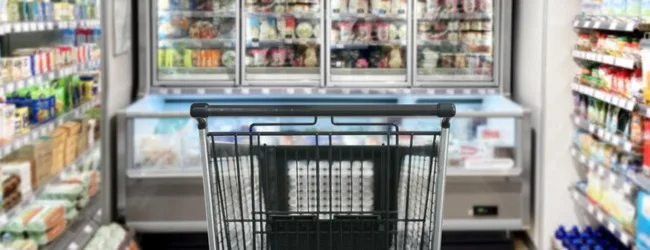Table of contents
- What Exactly is a Cold Storage Business?
- Why Consider Starting a Cold Storage Business in India?
- Types of Cold Storage Facilities
- Eligibility Criteria for Setting Up a Cold Storage Unit in India
- Key Guidelines and Regulations to Follow
- How to Start Your Cold Storage Business: A Step-by-Step Guide
- Investment and Setup Cost for a Cold Storage Business in India
- Benefits of Running a Cold Storage Business
- Potential Challenges and Disadvantages
- Conclusion
- Frequently Asked Questions (FAQs)
India, being one of the largest producers of fruits, vegetables, and milk globally, faces a significant challenge: post-harvest loss. A massive amount of perishable produce spoils before it reaches the consumer due to inadequate storage infrastructure. This is where a cold storage business steps in as a vital solution and a potentially lucrative venture.
If you’re considering entering this sector, you’ve come to the right place. This comprehensive guide provides a step-by-step plan, covering everything from understanding the concept to estimating setup costs, navigating guidelines, and maximizing your chances of success in the Indian market.
What Exactly is a Cold Storage Business?
A cold storage business operates facilities designed to store perishable goods at controlled low temperatures. Think of it as a large-scale refrigerator or freezer. The primary goal is to:
- Extend Shelf Life: Slow down the deterioration process of items like fruits, vegetables, dairy products, meat, fish, pharmaceuticals, and chemicals.
- Maintain Quality: Preserve the texture, flavour, nutritional value, and overall quality of stored goods.
- Reduce Spoilage: Significantly cut down wastage, especially for seasonal produce.
- Ensure Year-Round Availability: Allow consumers access to seasonal products even during the off-season.
Essentially, these businesses rent out space within their temperature-controlled warehouses to farmers, traders, food processing companies, pharmaceutical firms, and retailers.
Why Consider Starting a Cold Storage Business in India?

The cold storage business sector in India presents a compelling opportunity for several reasons:
- High Demand & Market Potential:
- India faces post-harvest losses estimated to be in the range of ₹92,000 crores annually, largely due to insufficient cold chain infrastructure.
- The demand for processed food, frozen items, and pharmaceuticals requiring temperature-controlled storage is rapidly increasing with changing lifestyles and rising incomes.
- The government’s focus on doubling farmers’ income also necessitates better storage to prevent distress sales.
- Government Support & Subsidies:
- The Indian government actively promotes the development of cold chain infrastructure. Various schemes and subsidies are available through bodies like:
- National Horticulture Board (NHB)
- Ministry of Food Processing Industries (MOFPI) under schemes like Pradhan Mantri Kisan Sampada Yojana (PMKSY)
- Mission for Integrated Development of Horticulture (MIDH)
- National Bank for Agriculture and Rural Development (NABARD)
- These schemes can significantly reduce the initial capital investment burden. (Highlight: Leveraging government support is crucial for viability).
- The Indian government actively promotes the development of cold chain infrastructure. Various schemes and subsidies are available through bodies like:
- Essential Infrastructure: Cold storage is no longer a luxury but a critical component of the modern agricultural and pharmaceutical supply chain. It connects farmers to markets more efficiently.
- Profitability Potential: While requiring significant investment, a well-managed and strategically located cold storage business can yield substantial returns due to high demand and essential service nature.
Types of Cold Storage Facilities
Cold storage units can be broadly categorized based on the products they store and the technology used:
- Multi-Purpose Cold Storage: Designed to store a variety of products like fruits, vegetables, dry fruits, spices, pulses, etc., usually maintained at temperatures between +2°C and +10°C with humidity control. These are the most common types.
- Single-Purpose Cold Storage: Optimized for specific products requiring precise temperature and environmental conditions. Examples include:
- Dairy & Meat: Requires freezing temperatures (typically below -18°C).
- Pharmaceuticals: Needs strict temperature control within specific narrow ranges (e.g., 2°C to 8°C).
- Specific Fruits/Vegetables: Some items like potatoes or onions have unique storage requirements.
- Controlled Atmosphere (CA) Storage: These advanced facilities control not just temperature and humidity but also the concentration of oxygen, carbon dioxide, and nitrogen in the storage chambers. This further slows down respiration and ripening, significantly extending the storage life of specific fruits like apples and pears.
- Modified Atmosphere (MA) Storage: Similar to CA but involves altering the atmosphere within the packaging rather than the entire room. Often used in conjunction with cold storage.
💡 Pro Tip: If you want to start a business but have too many doubts, connect with a business expert from Boss Wallah for guidance – https://bw1.in/1116
Eligibility Criteria for Setting Up a Cold Storage Unit in India
While specific requirements might vary slightly depending on the state and the government scheme you apply under, general eligibility often includes:
- Entity Type: Individuals, groups of farmers/growers, partnership firms, proprietary firms, companies, corporations, cooperatives, Agricultural Produce Market Committees (APMCs), Self Help Groups (SHGs), NGOs, etc.
- Land: You must own the land or have it on a registered lease for a significant period (often minimum 15-30 years, depending on the scheme). The land title should be clear.
- Financial Viability: You need to demonstrate financial capacity to bear a portion of the project cost and operational expenses. Banks and subsidy providers will assess the project’s feasibility.
- Compliance: Willingness to adhere to all regulatory, technical, and operational guidelines set by government bodies.
Key Guidelines and Regulations to Follow

Setting up a cold storage business involves adhering to several regulations:
Licensing and Permits:
- FSSAI License: Mandatory if storing food products.
- Local Municipal Authority Permits: For construction and operation.
- Pollution Control Board Clearance: NOC (No Objection Certificate) may be required.
- Fire Department NOC: Ensuring fire safety measures are in place.
- Factory License: Depending on the scale and activities.
- GST Registration: For tax purposes.
Land Requirements:
- Location: Ideally close to producing centers (farms) or major consumption markets/distribution hubs. Good road connectivity is essential.
- Zoning: Land should be zoned for industrial or commercial use as per local regulations.
- Utilities: Ensure reliable access to electricity (crucial!) and water.
Infrastructure Standards:
- Insulation: High-quality insulation (PUF panels are common) is vital for energy efficiency.
- Refrigeration System: Choose reliable and energy-efficient refrigeration units suitable for the intended temperature range and load. Ammonia and Freon-based systems are common, each with pros and cons.
- Power Backup: Mandatory! A generator set with sufficient capacity to run essential cooling and lighting during power outages is non-negotiable.
- Material Handling Equipment: Forklifts, pallet trucks, bins, crates, and racking systems for efficient storage and movement.
- Safety: Proper electrical wiring, fire fighting equipment, emergency exits, and ammonia leak detectors (if applicable).
Government Schemes & Subsidies:
- Thoroughly research applicable central and state government schemes (NHB, MOFPI, MIDH, State Horticulture Missions).
- Understand the specific eligibility criteria, subsidy patterns (often credit-linked, back-ended), documentation required, and application process.
- Recommendation: Visit official websites like NHB (www.nhb.gov.in) and MOFPI (www.mofpi.gov.in) for the latest guidelines.
How to Start Your Cold Storage Business: A Step-by-Step Guide

Starting a cold storage business requires careful planning and execution. Here’s a systematic approach:
Step 1: In-depth Market Research & Business Plan:
- Identify your target customers (farmers, traders, food processors, pharma companies).
- Analyze the demand for cold storage in your chosen region. What commodities need storage?
- Study the competition – existing facilities, their capacity, occupancy rates, and pricing.
- Define the type and capacity of the cold storage unit you plan to build.
- Develop a detailed business plan covering market analysis, operational plan, marketing strategy, management team, and financial projections (including estimated revenue, costs, and profitability). (Highlight: A solid business plan is essential for securing loans and subsidies).
Step 2: Arrange Finances:
- Estimate the total project cost (detailed below).
- Determine your equity contribution.
- Explore loan options from banks (term loans, working capital loans). Banks often have specific schemes for agriculture infrastructure.
- Identify and apply for relevant government subsidies. Prepare the Detailed Project Report (DPR) as required by financial institutions and subsidy providers.
Step 3: Location Selection & Land Acquisition:
- Choose a location based on your market research (proximity to producers/consumers, connectivity, utilities).
- Acquire land either through purchase or long-term lease, ensuring clear title and appropriate zoning.
Step 4: Obtain Necessary Licenses & Permits:
- Start the application process for all required licenses and NOCs early, as this can be time-consuming. Engage with local authorities and understand the procedures.
Step 5: Design & Construction:
- Hire experienced architects and consultants specializing in cold storage design.
- Finalize the layout, chamber sizes, insulation type, and refrigeration system design.
- Select a reliable contractor for civil construction and insulation panel installation. Ensure quality control throughout the construction phase.
Step 6: Procure Machinery & Equipment:
- Order refrigeration units, generators, transformers (if needed), material handling equipment (forklifts, pallets), weighing scales, monitoring systems (temperature, humidity sensors), and safety equipment.
- Opt for energy-efficient and reliable machinery to minimize operational costs.
Step 7: Hire & Train Staff:
- Recruit personnel for management, operations, technical maintenance (crucial for refrigeration and generators), security, and labour.
- Provide adequate training on handling procedures, safety protocols, and equipment operation.
Step 8: Implement Technology:
- Consider implementing inventory management software (WMS – Warehouse Management System).
- Install remote temperature and humidity monitoring systems with alarms for better control and risk management.
Step 9: Marketing & Client Acquisition:
- Reach out to potential clients: Farmer Producer Organizations (FPOs), individual farmers, traders, exporters, food processing units, supermarkets, pharmaceutical companies.
- Develop a clear pricing structure (per pallet, per kg, per crate, per month/season).
- Highlight your facility’s features, reliability (especially power backup), and location advantages.
Step 10: Operations & Maintenance:
- Establish Standard Operating Procedures (SOPs) for receiving, storing, and dispatching goods.
- Implement a strict schedule for preventive maintenance of refrigeration units, generators, and other equipment.
- Ensure efficient energy management and hygiene standards.
Investment and Setup Cost for a Cold Storage Business in India
The setup cost for a cold storage business varies significantly based on:
- Capacity: Measured in Metric Tonnes (MT).
- Location: Land costs differ vastly between rural, semi-urban, and urban areas.
- Type of Facility: Multi-purpose vs. specialized (like CA storage, which is more expensive).
- Technology Used: Quality of insulation, efficiency of refrigeration units, automation level.
Here’s an approximate breakdown of major cost components:
- Land Cost/Lease: Highly variable based on location.
- Civil Construction: Building structure, chambers, office space, loading docks (Approx. ₹2,000 – ₹4,000 per sq. ft., depending on specifications).
- Insulation & Paneling: PUF panels for walls, ceiling, floor (Significant cost component).
- Refrigeration System: Compressors, condensers, evaporators, piping (Major expense).
- Power Backup: Generator set (Cost depends on KVA rating).
- Electrical Works: Transformer (if needed), wiring, control panels.
- Material Handling Equipment: Forklifts, pallet trucks, racks, bins.
- Licenses & Permits: Fees for various registrations and approvals.
- Technology: Software, sensors, monitoring systems.
- Working Capital: Initial funds for salaries, electricity bills, maintenance, marketing before revenue stabilizes.
- Miscellaneous: Office furniture, security systems, pre-operative expenses.
Illustrative Cost Range (Highly Variable):
- Small Unit (e.g., 1000 MT): ₹1 Crore – ₹2.5 Crores+
- Medium Unit (e.g., 5000 MT): ₹5 Crores – ₹10 Crores+
- Large Unit (e.g., 10,000 MT+): ₹10 Crores – ₹20 Crores++
Note: These are rough estimates as of early 2025. Costs can change based on market conditions, specific choices, and location. Government subsidies can potentially cover 35% to 50% (or even more in specific cases/regions) of the eligible project cost, significantly reducing the promoter’s contribution.
ALSO READ | Cold Storage in India: Benefits, Government Subsidies, and How to Apply
Benefits of Running a Cold Storage Business

- Reduces Food Wastage: Directly tackles a major national problem.
- Ensures Food Security: Makes produce available for longer durations.
- Price Stabilization: Helps buffer against extreme price fluctuations for seasonal goods.
- Supports Farmers: Provides farmers with better storage options, enabling them to avoid distress sales and get better prices.
- High Demand: Consistent demand from agriculture, food processing, and pharma sectors.
- Potential for Good Returns: Can be profitable if managed efficiently with high occupancy rates.
- Supports Rural Economy: Creates employment opportunities in rural and semi-urban areas.
Potential Challenges and Disadvantages
- High Initial Investment: Requires substantial capital outlay.
- High Operational Costs: Electricity is the single largest operating expense. Reliable and affordable power is critical. Maintenance costs for machinery are also significant.
- Technical Expertise: Requires skilled personnel for managing refrigeration systems and overall operations.
- Dependency on Power: Highly vulnerable to power outages if backup is inadequate.
- Regulatory Hurdles: Obtaining licenses and complying with regulations can be complex.
- Seasonality & Occupancy: Occupancy rates can fluctuate based on harvest seasons for certain commodities, impacting consistent revenue.
- Competition: Increasing number of players in some regions can lead to price pressures.
ALSO READ | How to Start a Supermarket: A Step-by-Step Guide for Success
Need Expert Guidance?
Starting a business can be challenging, but you don’t have to do it alone! At Boss Wallah, our 2,000+ business experts are ready to provide valuable insights and guidance. Whether you need help with marketing, finance, sourcing, or any other area of any business, our business experts are here to help you succeed- https://bw1.in/1116
Confused about Which Business to Start?
Want to start your own business but unsure which one to choose? Explore Boss Wallah, where you’ll find 500+ courses by successful business owners, featuring practical, step-by-step guides on starting and growing various businesses.
Find your perfect business idea today – https://bw1.in/1111
Conclusion
Starting a cold storage business in India is a venture with significant potential, addressing a critical need in the country’s supply chain. While the initial investment and operational challenges are substantial, the growing demand from various sectors and supportive government policies make it an attractive proposition.
Success hinges on meticulous planning, strategic location selection, efficient design and technology adoption, robust operational management (especially energy and maintenance), and strong client relationships. By carefully navigating the steps outlined above and leveraging available support, entrepreneurs can build a sustainable and profitable cold storage business that contributes positively to India’s agricultural and economic landscape.
Frequently Asked Questions (FAQs)
Q: How much does it cost to start a 5000 MT cold storage in India?
A: The cost can vary significantly based on location, technology, etc., but a rough estimate would be between ₹5 Crores and ₹10 Crores (as of early 2025), before considering subsidies. Land cost is a major variable.
Q: Is a cold storage business profitable in India?
A: Yes, it can be highly profitable if managed efficiently. Key factors include high occupancy rates, optimal energy management, strategic location, good client base, and potentially leveraging government subsidies. Profit margins depend on operational efficiency and pricing.
Q: What government subsidies are available for cold storage?
A: Major schemes are offered by the National Horticulture Board (NHB), Ministry of Food Processing Industries (MOFPI – under PMKSY), Mission for Integrated Development of Horticulture (MIDH), and NABARD. Subsidies are often credit-linked and back-ended, typically ranging from 35% to 50% (or more for specific categories/regions) of the eligible project cost. Always check official portals for current details.
Q: What are the main challenges in running a cold storage business?
A: The biggest challenges include high initial investment, very high electricity costs, dependency on reliable power (requiring robust backup), need for technical expertise for maintenance, managing fluctuating occupancy rates, and navigating regulatory processes.
Q: What licenses are needed to start a cold storage?
A: Key licenses include FSSAI (for food), local municipal permits, environmental clearance (NOC), fire department NOC, factory license (if applicable), and GST registration. Specific requirements may vary by state.
Q: What is the minimum land required for a cold storage unit?
A: The land area depends on the capacity. For a typical 5000 MT unit, you might need around 1 to 1.5 acres to accommodate the main building, machinery rooms, loading/unloading areas, office space, and parking.
Q: What temperature is maintained in a typical cold storage?
A: It depends on the product. Multi-purpose cold storages for fruits and vegetables usually operate between +2°C and +10°C. Freezer storage for meat, fish, or dairy operates below -18°C. Pharmaceutical storage often requires precise ranges like 2°C to 8°C.
Q: Can I get a bank loan for a cold storage project?
A: Yes, banks provide term loans and working capital finance for viable cold storage projects. A strong business plan and Detailed Project Report (DPR) are essential for loan applications. Banks often collaborate with subsidy schemes like those from NHB or NABARD.


